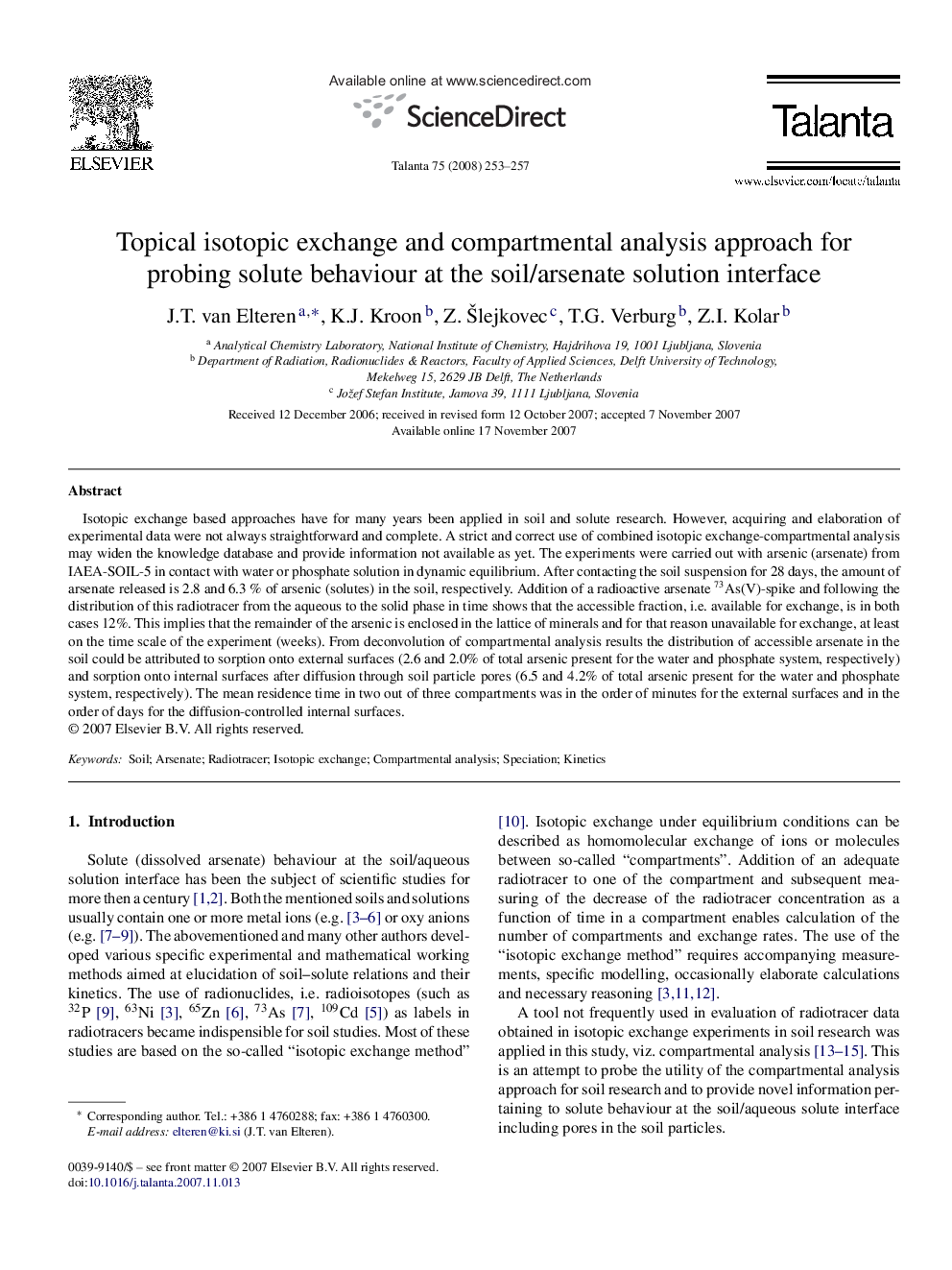| Article ID | Journal | Published Year | Pages | File Type |
|---|---|---|---|---|
| 1245548 | Talanta | 2008 | 5 Pages |
Abstract
Isotopic exchange based approaches have for many years been applied in soil and solute research. However, acquiring and elaboration of experimental data were not always straightforward and complete. A strict and correct use of combined isotopic exchange-compartmental analysis may widen the knowledge database and provide information not available as yet. The experiments were carried out with arsenic (arsenate) from IAEA-SOIL-5 in contact with water or phosphate solution in dynamic equilibrium. After contacting the soil suspension for 28 days, the amount of arsenate released is 2.8 and 6.3 % of arsenic (solutes) in the soil, respectively. Addition of a radioactive arsenate 73As(V)-spike and following the distribution of this radiotracer from the aqueous to the solid phase in time shows that the accessible fraction, i.e. available for exchange, is in both cases 12%. This implies that the remainder of the arsenic is enclosed in the lattice of minerals and for that reason unavailable for exchange, at least on the time scale of the experiment (weeks). From deconvolution of compartmental analysis results the distribution of accessible arsenate in the soil could be attributed to sorption onto external surfaces (2.6 and 2.0% of total arsenic present for the water and phosphate system, respectively) and sorption onto internal surfaces after diffusion through soil particle pores (6.5 and 4.2% of total arsenic present for the water and phosphate system, respectively). The mean residence time in two out of three compartments was in the order of minutes for the external surfaces and in the order of days for the diffusion-controlled internal surfaces.
Related Topics
Physical Sciences and Engineering
Chemistry
Analytical Chemistry
Authors
J.T. van Elteren, K.J. Kroon, Z. Å lejkovec, T.G. Verburg, Z.I. Kolar,
